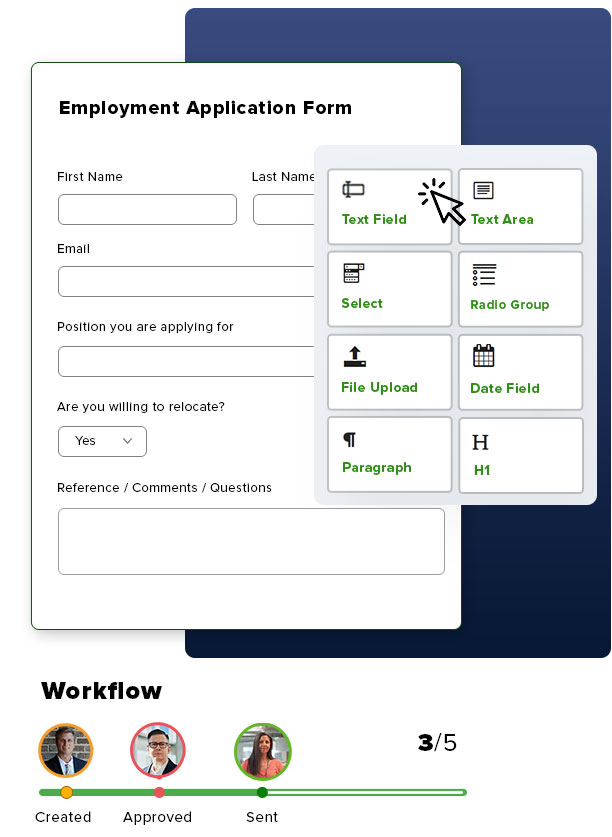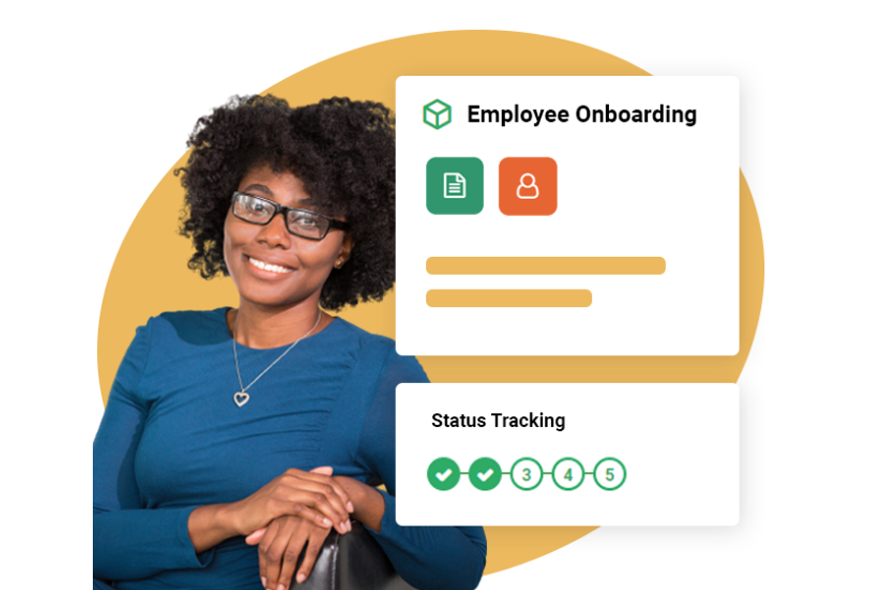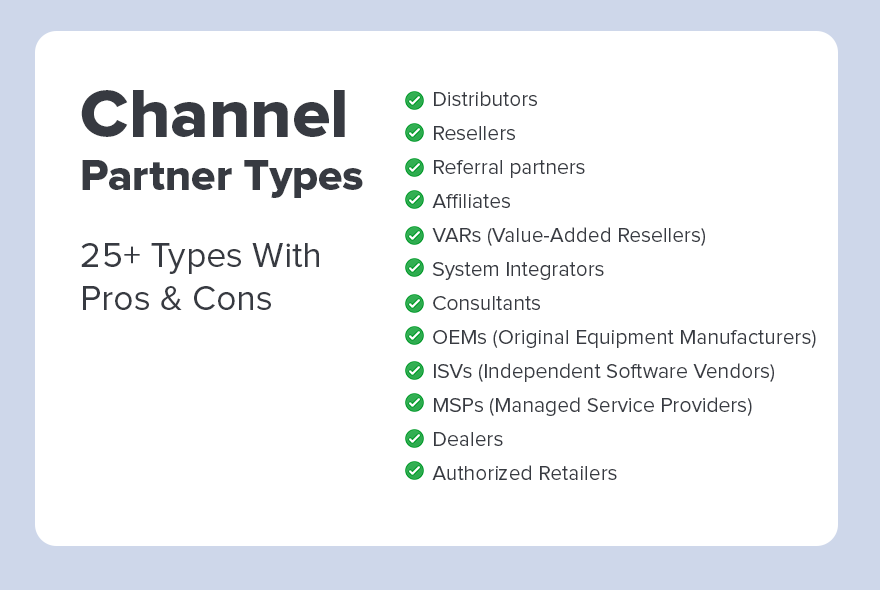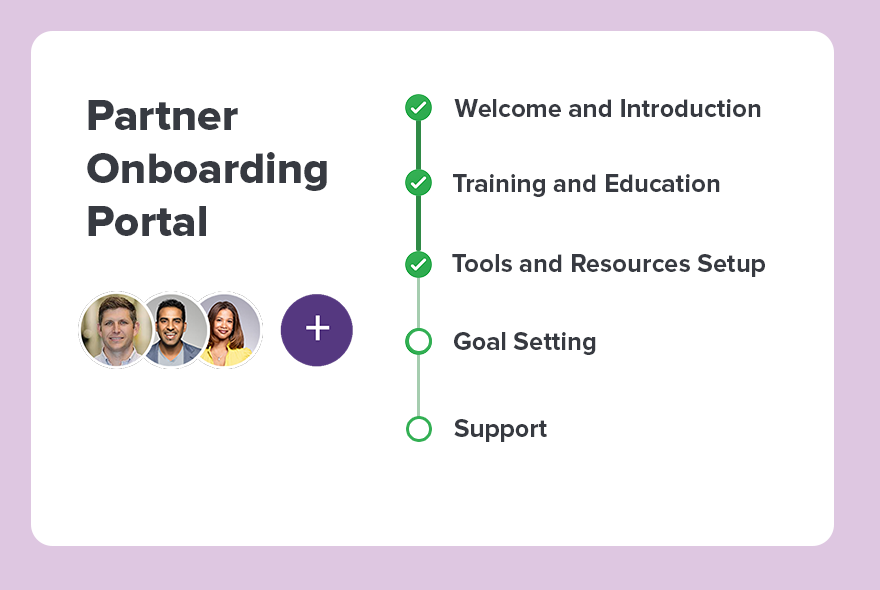Automate employee onboarding and create more welcoming atmosphere for your new hires by providing a streamlined and efficient employee experience.
Bridge the gap between IT and HR by automating HR processes with no-code workflows. This article discusses the numerous ways automation benefits your initial interaction with new employees- from reducing bottlenecks and human error to providing a seamless hiring process overall.
What is employee onboarding automation?
It is the use of ai and no-code workflow automation to streamline HR onboarding process. Implementing these practices involves using a platform such as DocsCube to trigger necessary actions to automate onboarding process forward.
These actions can work across integrated apps, data and collaborators. Onboarding automation undertakes and streamlines numerous tasks necessary to seamlessly integrate the new employee into the team.
Reasons to automate the onboarding process:
The manual onboarding process may involve challenging and time-consuming procedures that may seem confusing, and may cause new hire disengagement, and decreased productivity from the outset.
Errors occurring during the onboarding process create bottlenecks, information inconsistencies and even HR compliance issues and redundancies which in turn delay start dates.
Employee onboarding automation takes the guesswork out of compliance, by streamlining processes from the beginning and eliminating the many pain points incurred with a manual onboarding procedure.
Issues encountered during manual onboarding process:
Time-consuming and complex onboarding processes which may overwhelm the new hire thus causing disengagement and decreased productivity from the outset.
Manual input causes inconsistencies across departments which ultimately leads to HR and compliance-related issues.
Transparency and difficulties in tracking and completing of onboarding processes cause HR bottlenecks, a drain on recourses and delays in start dates.
The 10 most common actions to automate in the employee onboarding process:
Automating onboarding processes streamlines and makes the entire experience easier and more user-friendly for the incoming employee.
For the HR department, automation provides a more efficient, error-free process where tracking progress, and ensuring compliance is performed quickly and accurately.
The benefits for both parties are clear; from simple greetings to more complex documentation, automation paves the way for a more inclusive experience overall.
- Automating emails informing current employees of the new hire, therefore already creating a connection between the new and current workforce.
- Automatically informing IT and the employee of start-dates, necessary equipment such as laptops and any other requirements necessary for the successful start and productivity of the new hire.
- Creating employee onboarding checklist. Reducing the time required for the employee to begin their new role. This means automating set-up, the configuration of any necessary equipment, IT access and workstation functionality.
- Auto generation and delivery of onboarding documents. This includes offer letters, contracts, and other documents necessary for completion by the new hire.
- Automatically assigning relevant training or onboarding courses to new employees thus guaranteeing their access to recourses they require to succeed in their role.
- Tracking onboarding progress and completion of any required HR documentation, including Tax forms, direct deposit documentation and other necessary information required by the department.
- Tracking the completion of HR-related tasks, automating reminders and evaluation tasks.
6 Steps to automate employee onboarding process
Step 1: Evaluate your current onboarding process.
Identify the pain points in your current onboarding procedures.
To understand why and where automation is required, it is crucial to first evaluate the procedures currently in place.
The process requires a review of existing operations and workflows, inefficiencies and redundancies, and identifying areas where automation would be of most benefit.
Taking the time to investigate and plan for automation will, in turn, allow you to prepare a welcoming and simple method of onboarding new hires, while at the same time effectively supporting the HR department.
Preparation is 90% of the success you are seeking. Investing effort at this stage of the onboarding process, and assessing automation requirements ultimately results in increased efficiency, accuracy, compliance and an overall better experience for all stakeholders.
Step 2: Clearly define an onboarding checklist of necessary steps.
Formulate a clear, detailed employee onboarding checklist of all steps required in the onboarding process.
Taking the time to create a clearly defined and comprehensive checklist sets up the onboarding experience and makes it more streamlined and easier to navigate. When expectations are clearly defined, they are easier to undertake by all actors involved. Required paperwork, orientation training, required equipment and any other elements of onboarding should all be listed.
A detailed checklist gives the new employee a sense of reassurance that the company is competent, organized, and highly effective in the onboarding process. It creates trust from the outset and sets up the employees for success, while the HR department tracks progress, alleviates bottlenecks and ensures compliance.
Thinking of automation as a cycle where a successful setup ensures success and increases efficiency for the company overall.
Employee onboarding checklist that can be automated:
- Automatically send welcome emails containing onboarding information.
- Automated creation of employment contracts, forms and relevant HR documents.
- Collecting e-signatures for necessary documents.
- Sending automatic notifications to the IT department with new employee information including start dates and equipment requirements.
- Automatic enrollment of new hires in relevant employment benefits.
- Assignment and tracking of necessary training lessons and information.
- Evaluation process
Step 3: Create automated workflows
Workflow automation creates easy pathways and gives an overview of processes: tasks are managed step by step and can be assigned to one or several parties. New hires feel supported from the outset; the process, therefore, creates a positive working relationship.
Utilize the checklist to create automated workflows that follow your organizational structure.
Create Onboarding Automation That Follow Your Requirements
Step 4: Assess your workflows
It is crucial to test functionality and resolve workflow issues before launch. Run necessary test cases, and so multiple times if necessary.
The test phase is crucial in that it allows for fine-tuning, and ensuring that the whole process runs efficiently without issue. A well-tested program sets everyone up for success and creates the efficiencies you envisioned at the outset.
Step 5: Launch your onboarding workflows
It is that simple! You are now set to launch the workflow and automate your employee onboarding process. Continue monitoring the workflows to ensure optimal functionality.
Step 6: Evaluate, Resolve Issues and Improve Workflows on an Ongoing Basis
To ensure optimal functionality and employee satisfaction, it is important to continue to test, evaluate and optimize workflows on a regular basis. Doing so will ensure your automated workflows remain effective and continue to meet and exceed the requirements placed on them by all staff involved.
Continuously adjusting processes and seeking improvements will only benefit the organization in the long run. Removing redundancies, bottlenecks and errors over time will increase efficiency, accuracy, and transparency. All these factors meet employee needs, boost confidence and job satisfaction as well.
Ready To Automate Employee Onboarding Workflow?
DocsCube helps with automation. Receive a one-on-one consultation with one of our associates to discover the many benefits of automation today!
Book a 30 min DemoWhat type of contracts can be automated?
HR Contract automation has the numerous benefits of providing efficiency, accuracy and ensuring compliance with various departments and processes.
Employees are able to easily track progress, eliminate errors and bottlenecks, streamline operations and ultimately feel better supported in completing the necessary tasks. Take the opportunity to create a lasting first impression and a team atmosphere between current and incoming employees. Read more about Contract Automation.
Automate employee onboarding documents:
- Non-Disclosure Agreements (NDAs)
- Letters of offer of employment
- Detailed employment contracts
- Income Tax Documents
- Emergency Contact Forms
- Employee Handbook Confirmations
Automate employee offboarding documents:
- Exit forms and interviews
- Letters of Termination
- Company property retrieval
- Company Benefits Documentation and COBRA
- Employment insurance forms
- Non-compete and confidentiality Agreements
- Severance documents, final pay and retirement forms
Data-driven Employee Contract Automation
Save time, prevent human error and embrace the future of contract generation for all your HR needs. Automation ensures seamless, consistent, error proof contracts and mitigates costly legal risks, and unforeseen tribulations.

The benefits of automating employee onboarding process:
Automating onboarding processes increases efficiency overall: from simplifying and streamlining the new hire experience to improving accuracy, compliance and removing HR bottlenecks, it boosts overall staff productivity, engagement and even the company’s bottom line.
Below is a list of the most impactful benefits you will experience with onboarding automation software. We focus on the methods companies can utilize to simplify onboarding processes and support their employees to successfully navigate their employment experience.
Benefits of an automated onboarding experience:
Build trust and enhance employee engagement from the outset with streamlined and easy to navigate onboarding processes.
Streamline communication, track progress and completion, simplify and create a more efficient onboarding process. Not only will the process ensure transparency but will also create a more effective onboarding experience for your new hires.
Reduce costs, human error, and wasted time by automating offboarding processes.
Increased productivity, efficiency and reduced workload for HR staff allowing them to focus on high-value tasks.
Reduced security risks: Manual input and human error increase the likelihood of providing inaccurate data, accidentally sharing confidential information or even losing documents along the onboarding pathway. Automation significantly reduces the likelihood of these issues occurring as much of the onboarding process is streamlined. The information produced is also stored securely in a centralized, cloud-based repository.
Information is power. Gather valuable data, feedback and insights from exit interviews and outgoing employees and utilize the information to improve employee experience and retention rates.
Enhanced company reputation. Demonstrating efficiency, capability and streamlined processes emits an overall impression of professionalism for both onboarding and offboarding of employees.
Where to begin?
Evaluate and identify the bottlenecks and redundancies in your current process. Determining the pitfalls will help you focus on the tasks that require urgent attention, and help you identify which processes can be automated.
The research stage: There are many automation software solutions on the market. Selecting the right one will depend on your requirements and preferences. Search out platforms that address the problems you need to solve and are easy to integrate into your current HR and workflow processes. DocsCube is easy to use, contains customizable and flexible solutions to meet your needs. Integration is quick and simple. No coding, no headaches, just results.
Visualizing the workflow assists in first seeing the current state of your automation journey, then developing it with your needs in mind. This step ensures that all workflows include all your requirements and all necessary tasks are completed efficiently and error-free.
Train your colleagues to use the new automation software. Automation workflows should be easy to follow and intuitive. All staff are comfortable and familiar with processes involved, and support should be provided to ensure compliance.
Test the employee onboarding automation and automation software. Do this ideally with a small select group of hires. Evaluate efficiencies, redundancies, bottlenecks and other issues. Address them prior to launching the software on a larger scale
Book a Demo and Find Out How To Automate Operations Within Minutes
Our specialist will answer all your questions and help you learn more about DoscCube.
Book a 30 min DemoFAQ
How does workflow automation increase HR efficiency during the onboarding and offboarding process?
.Workflow automation cuts the time required to complete numerous tasks that were previously completed manually. These includes document creation, data entry, sending emails, e-signatures and other communication strategies. Automation workflows streamlines processes and boosts efficiency allowing the HR department to focus on high value tasks more akin to their expertise such as onboarding-offboarding strategies, talent acquisition and development and employee satisfaction.
How does document automation assist with employee onboarding and offboarding processes?
Automation streamlines processes involved with the production and processing of all types of HR documents such as offer letters, NDAs, tax and other forms. Workflow automation eliminates human error, redundancies and creates documents that are clear, consistent while simultaneously optimizing efficiency.
What are the actions that can be automated?
- Emailing automated welcome letters, “next steps” information and onboarding documents.
- Drafting of numerous HR documents including onboarding/offboarding, employment contracts and other necessary forms.
- Requesting and collecting e-signatures.
- Enrolling current and new employees in relevant benefits automatically.
- Assigning and tracking completion of: required training programs, onboarding paperwork, and other HR relevant documentation including tax documents and background checks.
- Automatically setting up the new hire for success. This includes configuration of workstations and equipment, facilitating the creation of ID badges and credentials with the IT department and ensuring accurate start dates.
How does automation improve the employee onboarding experience?
Automation provides a more streamlined process that is easy to use and follow. It reduces document delays, bottlenecks and redundancies throughout the workflow process. Employees execute their tasks in a fraction of the time. Forms can be completed online, processed quickly thus creating a more efficient, engaging and flexible experience for HR, and incoming employees alike.
Automate Employee Onboarding Process Today!
Book your personalized demo with one of our team members today. Our team will answer all you questions and help you learn more about DoscCube.
Book a Demo




